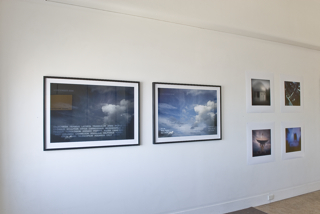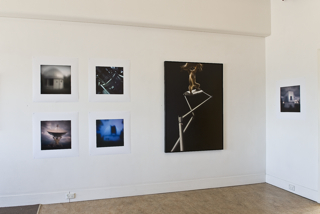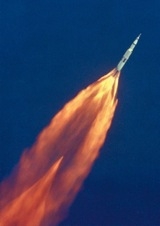Sky Lab (2009)
Stephen McLaughlan Gallery, Melbourne 2009/10
Curator: Felicity Spear

Sky Lab — Installation

Sky Lab — Installation
Sky Lab, as the title suggests, is an experiment. The questions: when we look towards the sky what do we see? What is ‘out there?’ How do we understand it from ‘back here?’ Increasingly we are looking beyond our planet to speculate about our place in the Universe. From a cosmic perspective science tells us that Earth is a totally insignificant speck of dust in an expanding and accelerating Universe. It will eventually disappear, cooling to the point of extinction. We are ‘Earthlings’ made from that dust. The artists involved in Sky Lab are experimenting in diverse ways with the culture and technologies of sky-situated knowledge.
Fifty years ago in 1959 C.P. Snow delivered his famous Rede Lecture, The Two Cultures, drawing our attention to the growing divide between the humanities and sciences. He stressed the need for a greater degree of literacy in both scientific and cultural respects. The increasing specialization and complexity of science has meant that in general the public mind sees science as inaccessible, and to an extent the same might be said of art. This has taken place in the context of a technologically driven and rapidly changing globalised world where we are being both connected more closely, and also drawn apart through complex communication systems. As our perspective changes and we find ourselves challenged by the urgent problem of sustaining life and biodiversity on Earth, new conversations between art and science, in both Western and Indigenous cultures, have the potential to contribute to new thinking.

Apollo 11 Launch
Courtesy of NASA
One of the values of history is to remind us, for better or worse, of where we come from. It is 40 years since the spacecraft Apollo 11 Moon Landing and humans’ first steps beyond Earth. These steps had their birth in a long historical trajectory. 400 years ago Galileo constructed his telescope. Looking into the night sky for the first time beyond the naked eye he saw the planet Jupiter surrounded by its moons. At the time his discovery supported the highly contentious Copernican view that Earth belonged to a solar-centered planetary system. In 2009, the International Year of Astronomy pays homage to Galileo.
2009 also marks 150 years since Charles Darwin published The Origin of the Species. His research into evolution via genetic variation and natural selection shows that we are genetically related to all living things on Earth. This has become the central organizing principle in biology. It plays a significant role in astronomy and cosmology by referring to the way in which the Universe changes over time. These events have grown out of a belief that science is our most reliable knowledge system for understanding the physical world. Artists are also drawn to the understanding and representation of nature, however, while remaking nature on the basis of understanding, they are not accountable to demonstrate proof. In this way artists are able to find a poetic dimension or insight that speaks of things outside art in new ways. (Felicity Spear)